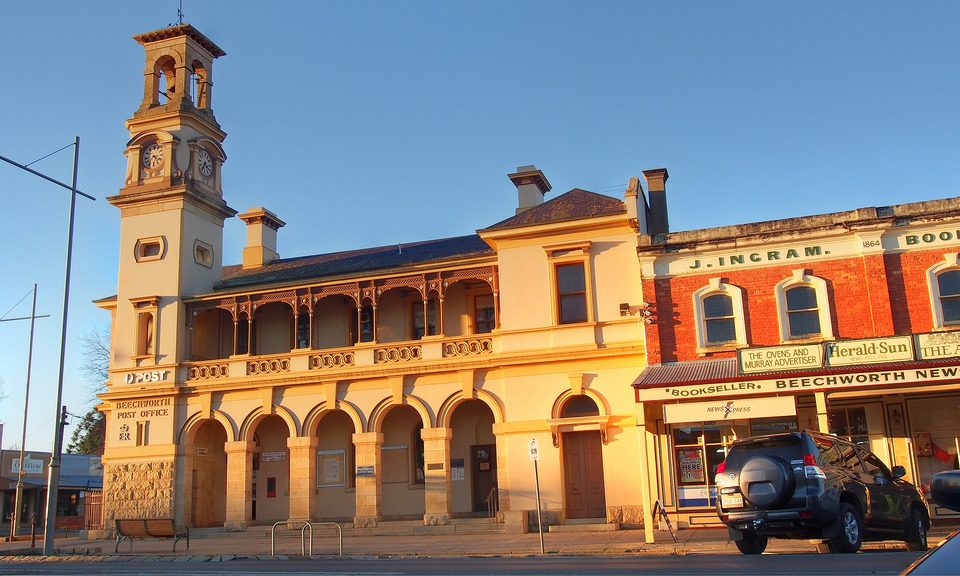A ‘Deep Roots’ Fishy Story From The Barwon Darling, NSW
‘Going Local Convergence’ In Brisbane – Meet US Guru Judy Wicks
April 19, 2008Business Helps Girls Go ‘Beyond Britney & Bacardi Breezers’
April 23, 2008I have found a lovely childhood image – a cultural experience I think we would all love to see passed on to future generations.
Mibby Clarke, now in his forties, has lived in the remote community of West Brewarrina, western NSW, since he was four, and he is now sharing with visitors a part of the Barwon Darling River that has sustained his people for thousands of years.
In ancient times Brewarrina was a meeting place for several Aboriginal tribes, the focal point for food gathering, ceremony and inter-tribal marriage long before Egypt’s pyramids were built.
The old people picked their site for the fish traps well, Mibby says, because even though they were built during drought, this part of the river system has deep water holes that can weather any dry spell. Each tribe had its own traps, small traps for small tribes and bigger ones for the large tribes.
During the height of the recent drought, when the Bourke people were watching their water supplies from the Darling dwindle, 100 kms upstream Brewarrina was barely on stage 1 restrictions.
Childhood Memories
“Basically, whenever we had the chance and the fish were running in the river, every summer holiday and even in the wintertime, we’d come to the weir. All we’d come with is a box of matches, no money. Water? That’s here to drink. Feed? Crayfish, yellow belly, whatever,” says Mibby.
Just like the old days, Brewarrina’s children still gather in the shallows to take what they can eat or sell. Fingers feel under rocks for yellow belly and cod and European carp are thrown to die on the rocks.
Today’s Experience
Today ancient stone fish traps are displayed in the local Visitor Information Centre. Mibby the tour guide does not have the facilities to take visitors on an interactive tour that immerses them in the experience but he does take people to a timeless place where they can stand on a levee overlooking the river to the country beyond, where the water glides over a weir built in the ’60s, through funnels of rock cleverly placed against the flow, with herons and egrets watching on keenly.
Past ochre cliffs where traditional dancers still scrape colour from the walls, there is an underground Cultural Museum whose doors have been closed for years. Mibby says,
“Lack of funding….Maybe money will be found this year.”
This extraordinary site is in Brewarrina, officially the most under privileged shire in the state.
Mibby points to a series of stone formations further downstream – a more contemporary fish trap.
“With the help of Biami, our spirit, this is what we have here today.”
Today’s fishermen use the circular tree guard, plunged into the torrent, with a quick hand down the centre.
We change and we don’t change and hopefully the aura of bygone days in an ancient land persists. West Brewarrina is definitely on my ‘to do list’.


